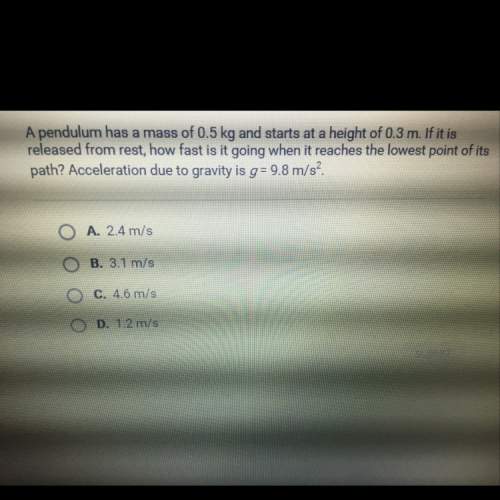
Physics, 18.10.2020 01:01 Larinadiaz5554
4) The quantity of heat required to change an object's temperature by exactly 1 degreesC.
5) This is a material that allows heat/electricity to transfer.
6) This is a measure of the quantity of matter.
8) Random kinetic energy possessed by objects in a material at finite temperature. An object that feels hot has a lot of this.
9) This is a group of elements with few valence electrons that conducts heat and electricity.
10) This is a measure of the average kinetic energy of a substance.
- Down
1) The quantity of heat, in joules or calories, required to raise the temperature of 1 gram of a substance 1 degreesC.
2) This is a material that does not allow heat to transfer.
3) Equipment used to measure the temperature of an object.
7) The transfer of thermal energy between two bodies which are at different temperatures. The SI unit for this is the Joule. Generally considered the raising of temperature due to thermal energy.

Answers: 1


Other questions on the subject: Physics

Physics, 21.06.2019 23:30, coryowens44
An object starts from rest at point f and speeds up continuously as it moves around an oval. a. choose a point about 1/8 th of the way around the oval from point f, and label it point g. draw a vector to represent the velocity of the object at point g. b. determine the change in velocity vector between points f and g.
Answers: 1

Physics, 22.06.2019 01:40, janeou17xn
Crowbar of 5 metre is used to lift an object of 800 metre if the effort arm is 200cm calculate the force applied
Answers: 1


Physics, 22.06.2019 05:40, kkbrookly7496
Two polarizers are oriented at 40∘ to each other and plane-polarized light is incident on them. if only 16 percent of the light gets through both of them, what was the initial polarization direction of the incident light?
Answers: 2
You know the right answer?
4) The quantity of heat required to change an object's temperature by exactly 1 degreesC.
5) This i...
Questions in other subjects:

Geography, 08.01.2020 01:31







Business, 08.01.2020 01:31





